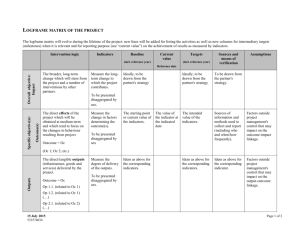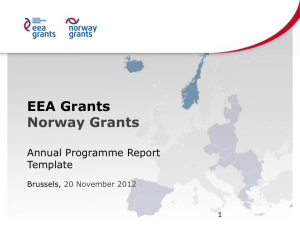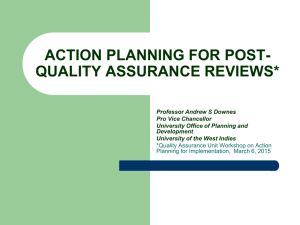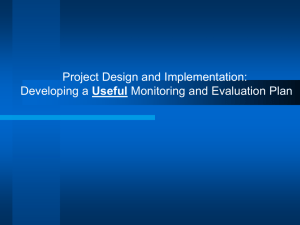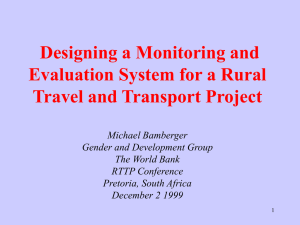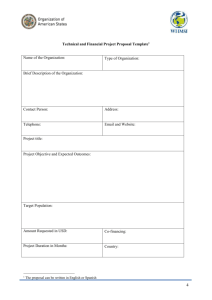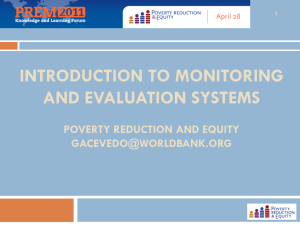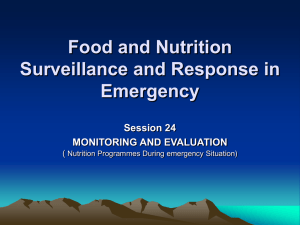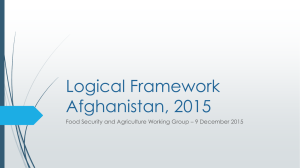tools to help strengthen project design, implementation and evaluation
advertisement
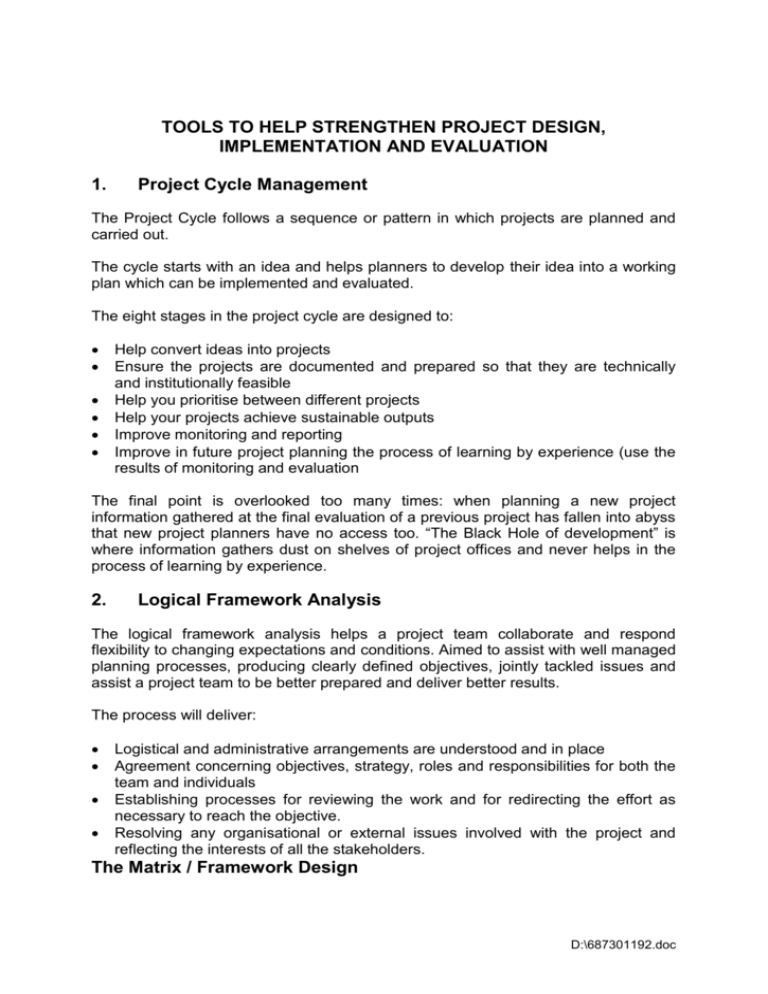
TOOLS TO HELP STRENGTHEN PROJECT DESIGN, IMPLEMENTATION AND EVALUATION 1. Project Cycle Management The Project Cycle follows a sequence or pattern in which projects are planned and carried out. The cycle starts with an idea and helps planners to develop their idea into a working plan which can be implemented and evaluated. The eight stages in the project cycle are designed to: Help convert ideas into projects Ensure the projects are documented and prepared so that they are technically and institutionally feasible Help you prioritise between different projects Help your projects achieve sustainable outputs Improve monitoring and reporting Improve in future project planning the process of learning by experience (use the results of monitoring and evaluation The final point is overlooked too many times: when planning a new project information gathered at the final evaluation of a previous project has fallen into abyss that new project planners have no access too. “The Black Hole of development” is where information gathers dust on shelves of project offices and never helps in the process of learning by experience. 2. Logical Framework Analysis The logical framework analysis helps a project team collaborate and respond flexibility to changing expectations and conditions. Aimed to assist with well managed planning processes, producing clearly defined objectives, jointly tackled issues and assist a project team to be better prepared and deliver better results. The process will deliver: Logistical and administrative arrangements are understood and in place Agreement concerning objectives, strategy, roles and responsibilities for both the team and individuals Establishing processes for reviewing the work and for redirecting the effort as necessary to reach the objective. Resolving any organisational or external issues involved with the project and reflecting the interests of all the stakeholders. The Matrix / Framework Design D:\687301192.doc Cause and effect or hierarchy of objectives Aim The higher order objective to which the project contributes (what are we going to achieve) Purpose The immediate effect or impact of the project on the target group (what is the project trying to achieve). Outputs The improvements or changes that the project will deliver. Activities The main activities that must be undertaken in order to achieve the outputs. Inputs The materials, equipment skills and other resources that must be provided to carry out the activities. The costs and timing of these inputs. Performance Measurement or objective verifiable indicators Indicators of Achievement The quantitative and qualitative observations that will show that the project has achieved its purpose. The indicators are the evidence that you would show to someone to demonstrate what the project has achieved. There will also be indicators to show that the project has completed its outputs. Monitoring, reporting and evaluation or means of verification Means of Verification How you will collect the observations of the indicators. What sources of information will you use? Can you use existing sources? Do you need to design methods of collecting information under inputs. Systems and integration or assumptions, risks and external factors Assumptions/Risks/Necessary conditions of success What might stop the project from being successful? What factors that cannot be controlled by the project could limit progress? 3. Stages for Planning the Process Stakeholder analysis to identify all parties involved: Write down all institutions, groups and individuals affected by the problem the project plans to address. Categorise them into which interests and views are to be given priority when analysing the problems. D:\687301192.doc Take a closer look at all of the groups and select the moist important. Examine: the main problem facing the group, needs and interests of the group, strengths and weaknesses and the main conflicts of interest and dependency with other groups. Developing the problem tree Identify major existing problems based upon available information (brainstorming) Select one focal problem for the analysis Develop the problem tree beginning with the substantial and direct causes of the focal problem in the centre of your page Place the direct effects of the focal problem above the centre and the direct causes of the focal problem below the centre Developing the objective tree Reformulate all the elements in the problem tree to positive, desirable conditions Review the resulting means-end relationship to ensure validity and completeness of the objective tree Delete objectives which appear unrealistic or unnecessary Draw connecting lines to indicate the means-end relationships Methodology Develop a hypothesis ( a prediction about a cause and effect relationship involving uncertainty) Develop the hierarchy of project expectations: AIM (greater why) PURPOSE (why) OUTPUTS (what) ACTIVITIES (how) Use future completed action to describe the objective, strong action verbs Clarify the assumptions or risks to identify what is beyond the managers control Identify critical assumptions or risks which are in doubt Refine assumptions or risks that are too general Analyse their importance and probability Decide how to manage them / what to do Develop objectives verifiable indicators, the conditions that signal success. (the minimum number of indicators that measure what is important) Identify the indicator Set the Quantity Set the quality Set the time Examine the means of verification or the monitoring and reporting system Availability within normal sources Special data gathered required Who will pay for it? Who will implement it? How much data gathering is worthwhile? D:\687301192.doc Appraisal stage to ask: Will it work? Can it be improved? Is there a better way? Is it worth it? Develop a work plan from the log frame FINALLY The log frame is a tool to help with the project planning and monitoring it is not written in stone, it can be flexible and is designed to assist the project management, not tie their hand behind their backs. The log frame is as good as the managers who use it. D:\687301192.doc
